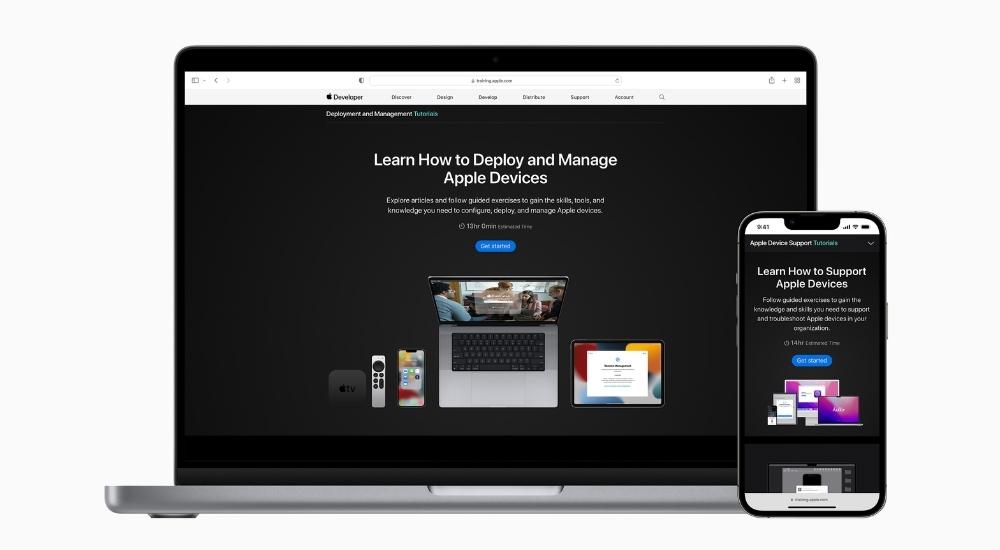In the world of business, marketing is key. Without a strong marketing campaign, a company can fall behind its competitors, no matter how great its products or services may be. Positioning is one element of marketing that is essential to success. In this article, we’ll discuss what positioning is and how to go about achieving it for your business. We’ll also look at some examples of companies that have done it well. So read on to learn all you need to know about positioning in marketing.
What Is Positioning In Marketing?
Positioning in marketing refers to the process of creating and establishing a unique and distinct image or perception of a brand or product in the minds of consumers. This can be done through various tactics, including advertising campaigns, packaging design, pricing strategies, and overall branding efforts.
One key aspect of positioning is differentiating a brand from its competitors. This involves highlighting unique features or benefits that set it apart in the marketplace. For example, a shampoo brand might position itself as being specially formulated for dry hair, targeting a specific consumer need.
Positioning can also involve repositioning a brand to better align with changing market trends or consumer preferences. This may involve updating the messaging and branding efforts to better resonate with target audiences.
Another important element of positioning is building and maintaining a consistent image for the brand over time. This helps create recognition and familiarity among consumers, ultimately leading to higher levels of trust and loyalty.
In sum, positioning plays an essential role in shaping how consumers perceive and ultimately make purchasing decisions for a particular brand or product. Effective positioning strategies can help drive success for businesses in an increasingly competitive market.
What Are The Types Of Positioning In Marketing

There are four main types of positioning in marketing: product positioning, price positioning, place positioning, and people positioning.
Product Positioning
Product positioning involves creating a specific image or identity for a product in the minds of consumers. This can be achieved through advertising and packaging decisions as well as through brand partnerships or sponsorships.
Advertising that focuses on product positioning can help to create a more favorable image for the product, which in turn will make people more likely to buy it. It’s also important to make sure that the packaging looks appealing and that the advertising is consistent across all media platforms. This way, you’re sure to reach your target audience no matter where they are or what they’re doing.
Brand partnerships can also play an important role in product positioning. By working together with certain brands, you can promote your product in a way that is both effective and advantageous for both parties involved. This type of partnership allows you to diversify your marketing efforts and extend your reach even further than usual. And, lastly, sponsorship gives products a unique edge by helping to promote them in a positive light. This can help to build awareness for your product and generate more sales overall.
Price Positioning

Price positioning involves setting a specific price point for a product and targeting a certain demographic or customer segment that is willing to pay that price.
Price positioning is one of the most important aspects of marketing a product or service. It involves setting a specific price point for a product and targeting a certain demographic or customer segment that is willing to pay that price.
By pricing your product at a lower price point, you can attract more customers who are looking for an affordable option. On the other hand, by pricing your product at a higher price point, you can attract more customers who are looking for high-quality products that don’t cost too much.
It’s important to note that price positioning doesn’t just apply to products – it also applies to services. For example, if you’re an accountant, you may charge a higher fee than your competitors because you believe that your services are worth it. Similarly, if you’re providing a valuable service, like coaching or mentorship, you may charge an even higher fee because there’s value in what you offer.
Place Positioning
When it comes to selling a product, you need to think about where your target audience is located. This is known as place positioning, and it involves strategically choosing where to sell your product in order to reach the most people.
There are two main types of place positioning: category placement and channel placement.
Category placement involves placing your product within a specific category, such as home appliances or car parts. Channel placement, on the other hand, involves placing your product in specific channels, such as online or physical stores.
The best place for you to sell your product will depend on a number of factors, including your target market, the competition you face, and the location of your distribution channels. However, always make sure that you’re targeting the right people with the right message in order to maximize sales potential.
People Positioning

People positioning is a strategy that involves targeting a specific group of individuals with marketing efforts and campaigns. This allows companies to focus their efforts on those who are most likely to benefit from their products and services.
People positioning can be done in a number of ways, including segmenting your target market by age, demographic, location, or other factors. It can also be done by focusing on the specific needs or wants of your target market. For example, millennials might be targeted with marketing campaigns that focus on the unique lifestyle they lead and the trends they’re more likely to adopt. Working mothers might be targeted with ads that emphasize the importance of work-life balance.
The benefits of people positioning are clear: it allows companies to reach their target market at an optimal time and in a way that’s likely to be most effective. It also reduces the risk of wasting resources on campaigns that have no effect or even worse – backfire. So if you want to make sure your marketing efforts are successful, consider targeting people positioning strategies.
It is important for companies to consider all four types of positioning when developing their marketing strategy. A successful campaign will take into account not only the product itself but also how it is priced, where it is sold, and who it is marketed to. By carefully considering each element of positioning, companies can effectively reach their target audience and increase sales.
What Are The Benefits Of Positioning In Marketing?

The concept of positioning in marketing involves the deliberate crafting and communication of a brand’s unique attributes and characteristics in order to differentiate it from competitors and achieve a distinct spot in consumers’ minds. There are numerous potential benefits to effectively implementing positioning strategies, including:
Improved Brand Recognition And Recall
Branding is one of the most important aspects of a company’s success, and it’s essential that consumers have a clear understanding of a brand’s unique position in order to make informed purchasing decisions.
If your brand is able to create a strong sense of identity and convey its uniqueness clearly to customers, they are more likely to remember it when making purchasing decisions. This is because they will be better prepared to compare your product or service against others and make an informed decision as to which one they should choose.
Increased Competitive Advantage
There’s no doubt that the competitive landscape in the marketplace has changed drastically over the past few years. With so many new brands and products entering the market, it can be hard for any business to establish an edge and stay ahead of the curve.
One way that businesses can achieve increased competitive advantage is by positioning themselves in a way that differentiates them from their competitors. This means creating a unique selling proposition (USP), developing a strong brand image, and crafting an effective marketing strategy that targets your target customers.
The positioning also requires constant vigilance on your part – you need to be aware of what’s happening in your industry and make sure you’re staying up to date with trends so you can continue to provide value to your customers. Otherwise, you may find yourself losing ground to companies that are better equipped to adapt and move forward in this highly competitive market.
Facilitated Communication With The Target Audience

In order for a brand to communicate effectively with its target market, it is crucial to have a well-defined position. This means that the brand has a clear idea of who they are and what they stand for, which allows them to tailor its messaging accordingly.
For example, if a brand is selling luxury goods, it may want to focus its messaging on the luxurious nature of its products. They would also want to ensure that their target market knows that these products are expensive and high quality. In the same vein, if a brand is selling eco-friendly products, it may want to emphasize the environmental benefits of its products over all others.
By understanding and targeting your target market this way, you can ensure better communication between you and your customers. It will also help you build trust and credibility in the eyes of your target audience, which will ultimately lead to more sales.
Enhanced Customer Loyalty
There’s a reason that the customer loyalty of some of the world’s most iconic brands is unrivaled: they’ve been able to build a strong, differentiated position that gives their customers a specific reason to choose them over others.
By creating an ecosystem that is convenient, easy to use, and satisfying for their customers, these brands have been able to foster loyalty by providing them with something they care about. This can be anything from unique features and benefits to personalized service and support.
What’s more, this approach isn’t limited to simply selling products or services. It can also be applied in areas like branding, marketing, and advertising. By creating a unique experience for your customers, you can create an emotional connection that will keep them coming back for more
Greater Pricing Flexibility

There’s no doubt that consumers are more than willing to pay a premium for products or services that are of high quality. In fact, studies have shown that people are more likely to pay a higher price for something if they believe it’s worth it.
This is why brands that can establish a distinct position in the market can charge premium prices for their products or services. This is because they are able to justify their value to customers through their unique position in the market.
For example, Nike has been able to charge premium prices for its sneakers because it knows that its shoes are durable and stylish. Additionally, Starbucks has been able to charge high prices for its coffee drinks because consumers believe that it makes excellent coffee.
So, while there may be limits on how much you can increase your prices, by establishing a clear value proposition and distinguishing yourself from your competitors, you’ll be well on your way to pricing flexibility – and higher profits!
In summary, positioning in marketing can offer significant advantages for brands, helping them stand out among competitors, improve recognition and recall, facilitate communication with target audiences, enhance customer loyalty, and potentially even allow for greater pricing flexibility. Therefore, carefully considering and implementing positioning strategies can be highly beneficial for businesses looking to succeed in today’s competitive marketplace.
5 Prime Examples Of Positioning In Marketing
Here are five prime examples of positioning in marketing:
1. McDonald

In its “I’m Lovin’ It” campaign, McDonald’s positions itself as a provider of tasty and affordable meals for all types of consumers. This positioning has been incredibly successful for the fast-food giant, with the campaign running for over 15 years and being translated into over 100 languages.
Aside from its famous tagline, McDonald’s also markets itself as a family-friendly destination with its Happy Meals and PlayPlace locations in many of its restaurants. The company also frequently partners with popular movies and television shows to appeal to children and young adults.
McDonald’s also appeals to health-conscious consumers by offering options such as salads, wraps, and fruit on their menu. In recent years, the company has made efforts to offer more nutritious choices and provide dietary information for customers.
2. Apple

In recent years, Apple has cemented its position as one of the most successful and innovative technology companies in the world. This can be attributed in large part to the savvy positioning of their products as trendy, user-friendly, and constantly pushing the boundaries of what’s possible.
One key aspect of Apple’s positioning is its emphasis on design and aesthetics. The sleek and minimalist look of their products, from the iconic white headphones to the sleek shape of the iPhone, immediately sets them apart from competitors and appeals to consumers’ desire for stylish technology. This focus on design extends beyond just physical appearance; Apple’s product interfaces are also lauded for being intuitive and easy to navigate, making their devices a pleasure to use.
3. Samsung

In recent years, Samsung has made a push to position itself as a direct competitor to Apple in the technology market. The company touts its similar products, such as the Galaxy line of smartphones and tablets, at potentially lower prices.
But Samsung’s efforts go beyond just price comparisons. The company has emphasized design elements and features in its marketing campaigns, showcasing how its products offer a comparable – or even better – user experience than Apple’s offerings.
Samsung has also made moves to expand its product line, delving into new areas such as virtual reality headsets and smartwatches. In doing so, the company is positioning itself as a leader in innovative technology and a major player in the industry.
4. Nike

In the world of sports, Nike reigns supreme as a leading athletic brand. The company’s famous “Just Do It” slogan encourages consumers to push themselves to the limit and has become a cultural phenomenon.
Nike also bolsters its position in the market through strategic endorsements from top athletes such as LeBron James, Serena Williams, and Cristiano Ronaldo. These high-profile partnerships not only bring more visibility and credibility to the brand but also allow Nike to target specific markets and demographics.
But it’s not just about endorsements – Nike consistently delivers innovative and high-performance products that meet the needs of athletes across various sports. From running shoes to basketball sneakers to golf clubs, Nike continuously introduces cutting-edge designs and technology in its products.
The brand also appeals to fashion-conscious consumers with stylish clothing lines and collaborations with popular designers like Virgil Abloh. In addition, Nike’s involvement in social issues such as equal pay for female athletes shows its commitment to making a positive impact on society.
5. Volkswagen

In recent years, Volkswagen has faced substantial backlash and scrutiny for its involvement in the diesel emissions scandal. Despite this, the German car company continues to position itself as a reliable, trustworthy brand with its iconic slogan “Think small.”
While competitors like BMW and Mercedes Benz are known for their luxury and flashy designs, Volkswagen focuses on practicality and efficiency with its smaller vehicles. This positioning has helped the company appeal to a wide range of consumers, from young professionals to families looking for a reliable means of transportation.
These are just a few examples of how companies use positioning in their marketing efforts to stand out from the competition and appeal to specific target markets. Effective positioning can be the difference between success and failure in the cutthroat world of business.
Wrap Up
Positioning is key to a successful marketing campaign. It’s the first step in getting your product or service in front of the right people. You need to find the sweet spot for your brand and then communicate it clearly and consistently. There are three different types of positioning that you can use, each with its own advantages and disadvantages. Once you’ve chosen a position, make sure all of your marketing materials – from website to social media posts – reflect that stance. Standing out in today’s crowded marketplace takes effort, but if you get it right, positioning can be your best ally in driving sales growth.
If you want access to more helpful information like this, be sure to check out Tigren’s blog. Our team is full of eCommerce experts who are always coming up with new and innovative content. We write about a variety of topics related to eCommerce, ranging from online marketing strategies all the way to development tips. If you’re ever having trouble with your eCommerce site, feel free to reach out to us for help – we would be more than happy to assist you in any way possible!

Read more:
Best Types of Marketing: Create Marketing Content For Business Growth

